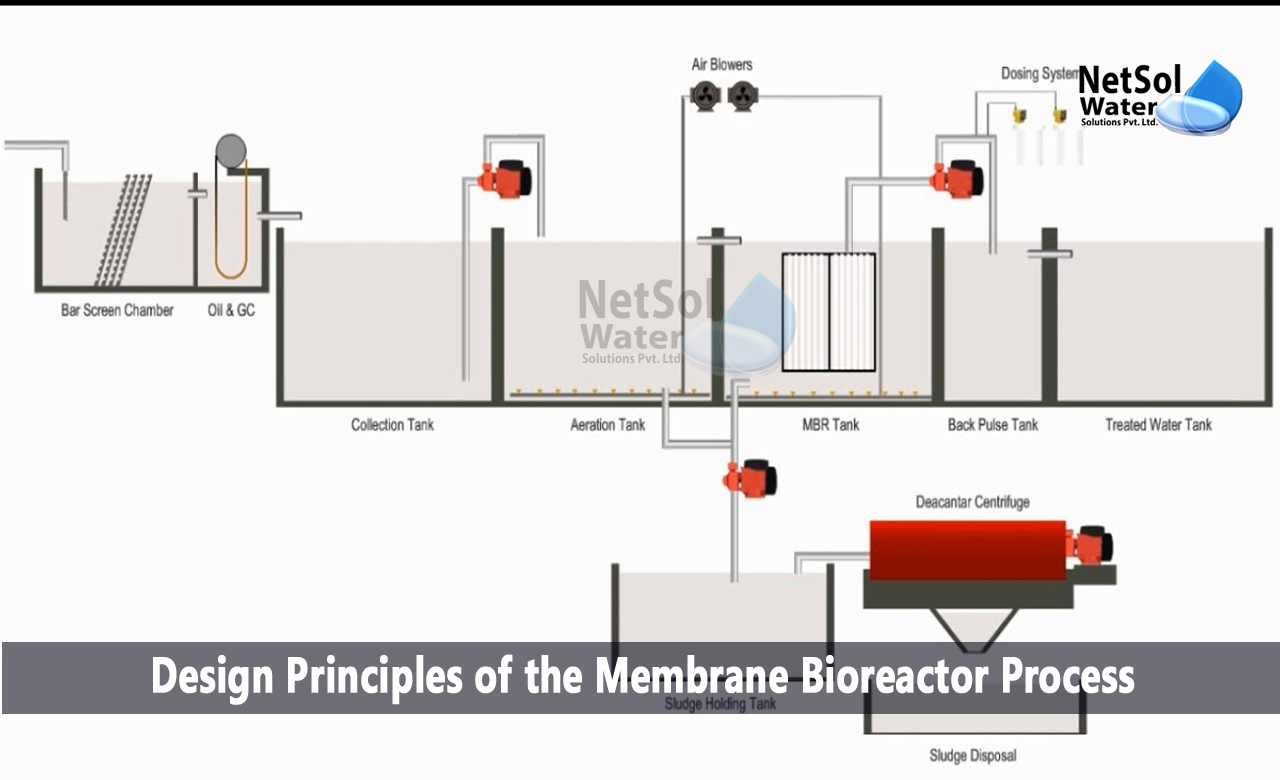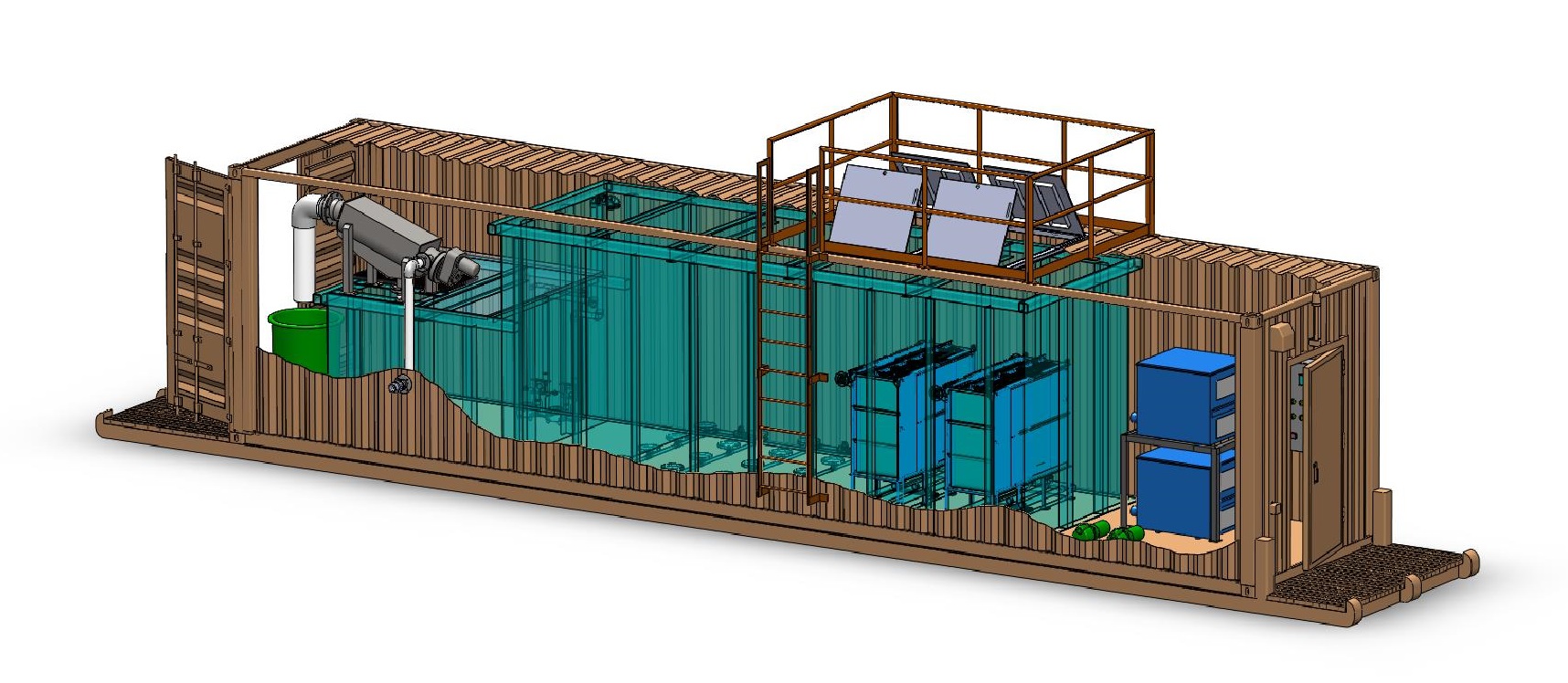Future Trends in Membrane Bioreactor Technology and Its Global Impact
Future Trends in Membrane Bioreactor Technology and Its Global Impact
Blog Article
Membrane Layer Bioreactors Clarified: Effective Solutions for Tidy Water
Membrane bioreactors (MBRs) have emerged as a sophisticated solution for resolving the pushing difficulties of wastewater treatment - Membrane Bioreactor. By incorporating biological processes with sophisticated membrane filtering, MBRs not only enhance the top quality of treated water but also reduce the spatial needs of therapy centers.

What Are Membrane Bioreactors?
Membrane bioreactors (MBRs) are innovative wastewater treatment systems that integrate organic deterioration procedures with membrane filtration modern technology. This integration permits for the reliable removal of impurities from water, making MBRs a recommended option in different applications, consisting of local wastewater therapy and industrial effluent management.

One of the vital benefits of MBRs is their capacity to produce high-grade effluent, often ideal for reuse in irrigation or commercial procedures. Additionally, MBRs require a smaller footprint compared to traditional therapy systems, making them excellent for city settings where room might be restricted.
Moreover, MBRs can successfully deal with varying influent lots and are less susceptible to the results of harmful shocks. These attributes add to their expanding appeal as a lasting remedy for attending to the raising need for clean water while lessening environmental effects.
Just How Membrane Layer Bioreactors Work
While the operation of membrane layer bioreactors (MBRs) might appear complicated, it fundamentally revolves around the harmony in between organic procedures and membrane filtration. MBRs incorporate a biological therapy procedure, normally activated sludge, with a membrane separation unit to treat wastewater efficiently.
In an MBR system, wastewater is very first introduced into a bioreactor where microbes deteriorate organic matter and other impurities. The biological task minimizes the focus of pollutants while advertising the growth of biomass. Following this biological treatment, the mixed alcohol undergoes membrane layer purification, which can be microfiltration or ultrafiltration, relying on the preferred effluent top quality.
The membrane layers act as a physical barrier, permitting water and small solutes to pass while keeping suspended solids and bigger molecules. This enables the system to maintain a high concentration of biomass within the reactor, improving the treatment effectiveness.
Furthermore, the continual splitting up of treated water from the biomass assists in a small style and lessens the footprint of the treatment facility. On the whole, the mix of organic destruction and membrane layer filtration in MBRs leads to trustworthy and reliable wastewater treatment, making sure top notch effluent suitable for different applications.
Benefits of MBR Modern Technology
One of the key advantages of membrane layer bioreactor (MBR) modern technology is its ability to create top notch effluent with a considerably minimized footprint contrasted to conventional wastewater treatment methods. MBR systems efficiently combine organic therapy and membrane purification, resulting in remarkable elimination of pollutants, including suspended solids, virus, and raw material. This capacity brings about effluent that commonly fulfills or surpasses rigorous regulative standards for reuse and discharge.
In addition, MBR technology allows for higher biomass concentrations, which improves the therapy performance and reduces the needed activator volume. This compact design is especially useful in metropolitan locations where room is limited. The operational versatility of MBR systems likewise means they can adapt to varying influent qualities and circulation prices, making them suitable for a broad variety of applications.
Furthermore, the reduced sludge production related to MBR processes contributes to decrease functional and maintenance expenses. The membranes serve as a physical obstacle, minimizing the risk of obstructing and allowing longer functional durations between cleansing. Overall, the benefits of MBR modern technology make it an appealing option for lasting wastewater treatment, attending to both ecological problems and the demand for effective resource monitoring.
Applications of Membrane Layer Bioreactors
With their adaptability and effectiveness, membrane layer bioreactors (MBRs) discover applications across various sectors, including metropolitan wastewater treatment, industrial procedures, and even water improvement. In local setups, MBRs provide a small service for dealing with wastewater, properly eliminating pollutants while all at once producing top quality effluent that meets rigorous regulatory standards. This makes them especially appropriate for areas with minimal area.
In commercial applications, MBR innovation is made use of for dealing with procedure water, particularly in industries such as food and beverage, pharmaceuticals, and petrochemicals. These markets benefit from MBRs' capacity to handle high natural loads and their efficiency in recouping valuable sources from wastewater, such as nutrients and water.
In addition, MBRs play an important duty in water reclamation efforts, allowing the reuse of dealt with wastewater for irrigation, commercial processes, or even as drinkable water after further treatment (Membrane Bioreactor). Their effectiveness in removing toxins and microorganisms makes them a reliable choice for ensuring water high quality in numerous reuse applications
Future of Water Therapy Solutions
The future of water treatment services is poised for transformative innovations driven by technical advancement and increasing ecological awareness. As global water deficiency ends up being a pushing issue, brand-new methods, consisting of membrane bioreactor (MBR) systems, are readied to play an essential role in enhancing the effectiveness and sustainability of read here water treatment processes.
Arising technologies such as artificial knowledge and equipment knowing are expected to maximize therapy operations, allowing for real-time surveillance and predictive maintenance. This will enhance the general reliability and effectiveness of water therapy centers. pop over to this web-site Additionally, innovations in membrane layer materials, such as graphene and nanofiltration, assure to enhance permeation rates and decrease fouling, resulting in reduced power intake and operational costs.
Furthermore, the combination of sustainable energy resources right into water therapy plants will certainly add to greener techniques. The circular economic situation version will additionally gain grip, motivating the recovery of valuable resources from wastewater, such as nutrients and power.
Verdict

Membrane layer bioreactors (MBRs) have emerged as a sophisticated solution for see here now dealing with the pushing difficulties of wastewater therapy. By incorporating organic processes with advanced membrane purification, MBRs not just enhance the top quality of cured water yet also decrease the spatial requirements of treatment centers.One of the key advantages of membrane bioreactor (MBR) modern technology is its capability to produce top quality effluent with a substantially decreased impact contrasted to conventional wastewater therapy techniques.With their convenience and performance, membrane bioreactors (MBRs) discover applications throughout different sectors, including local wastewater therapy, industrial processes, and even water recovery.In final thought, membrane layer bioreactors represent a considerable advancement in wastewater therapy modern technology, integrating biological processes with reliable membrane layer filtration to generate top quality effluent.
Report this page